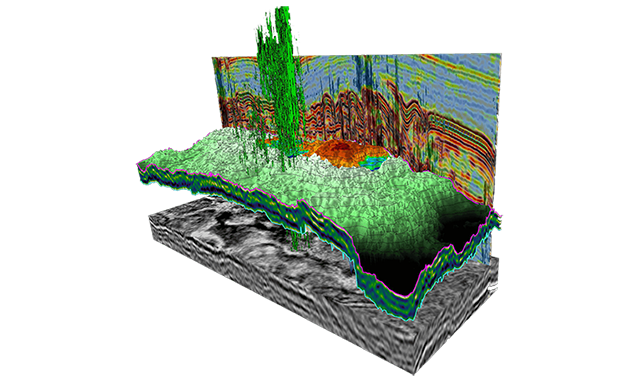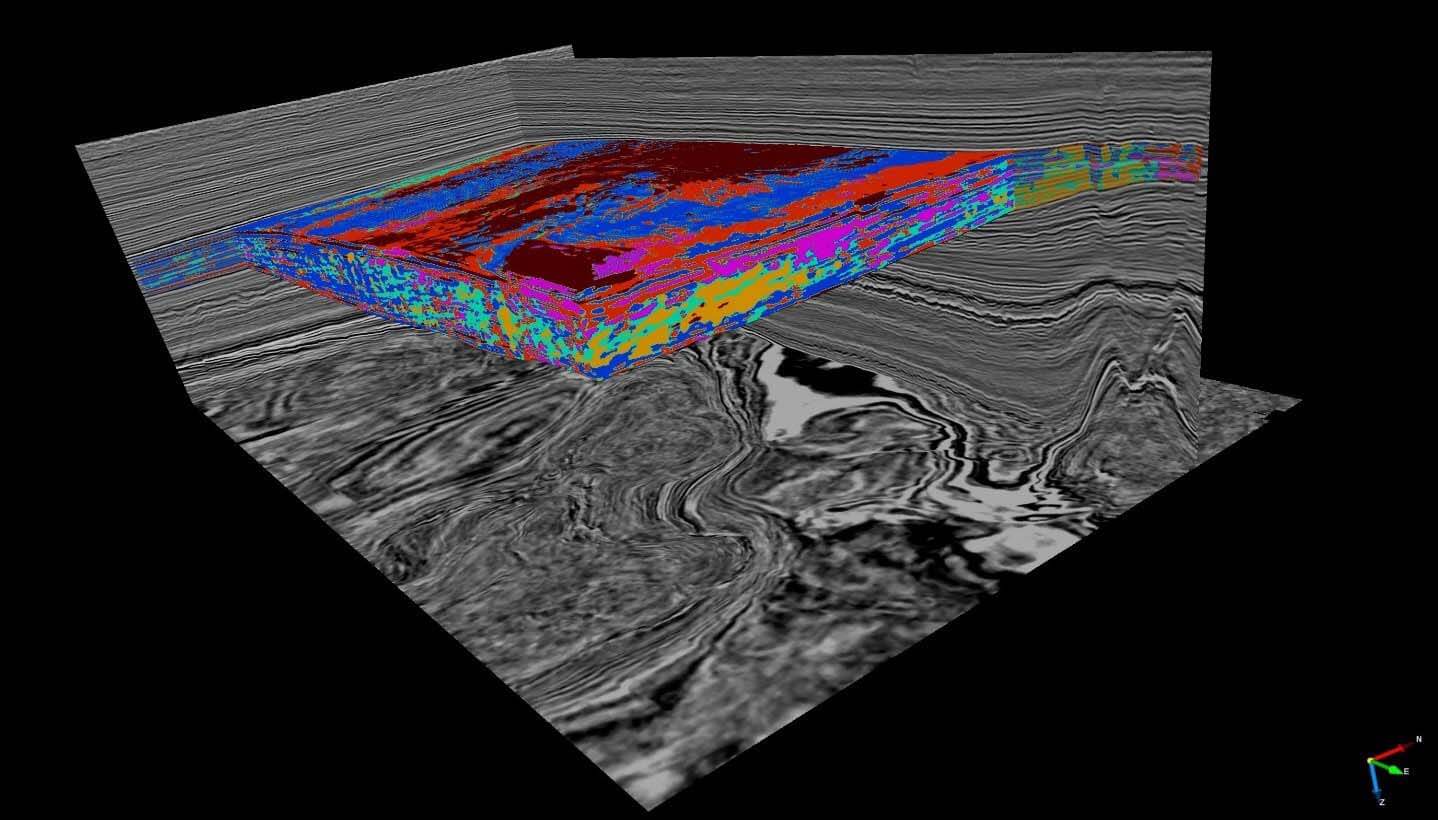MOL Norge AS, a subsidiary of the Hungarian state oil company MOL, is funding an R&D project that will extend OpendTect’s machine learning capabilities with the next generation “deep” neural networks.

In the nine-month project OpendTect will be connected to Python, TensorFlow and Keras. New networks will be tested on a proprietary data set. Python-TensoFlow-Keras is a popular research environment to build, test and apply the latest set of neural networks including Convolutional Neural Networks (CNNs), Recurrent Neural Networks (RNNs) and Long Short Term Memory (LSTM) networks.
OpendTect started off as a machine learning platform that was developed to create and interpret seismic Chimney Cubes (Fig. 1). This application is an example of a supervised learning approach. A Multi-Layer- Perceptron (MLP) type of neural network is trained on user-picked examples of chimneys and non- chimneys. At each sample position the cube gives the ‘probability’ of belonging to the class of data where the seismic response is disturbed vertically due to fluid migration. Chimney Cubes are used in petroleum systems studies and prospect ranking. For details have a look at dGB’s Chimney Atlas. The Chimney Atlas is a collection of published papers, books, posters, video’s and annotated PowerPoint presentations concerning seismic chimney processing and interpretation.
OpendTect’s current machine learning environment supports both supervised and unsupervised learning approaches. MLP networks are supervised networks that are used for classifying data into two, or more classes and to predict rock properties from known input examples. An example of the latter is the prediction of porosity from acoustic, or elastic inputs. The MLP network is trained on well data, either real, or simulated by SynthRock’s stochastic pseudo-well simulator.
The network for unsupervised learning in OpendTect is the Unsupervised Vector Quantizer (UVQ). This network is used in workflows for clustering (=segmenting) seismic facies. A popular workflow is called “Quick UVQ”. It generates seismic pattern maps by segmenting input waveforms that are extracted along a guiding horizon (Fig. 2). UVQ networks are also used to segment seismic response in 3D (Fig.3).
The current machine learning project extends the proven OpendTect environment with the latest research tools in this exciting field. The project promises to speed up seismic machine learning R&D and shorten the time between R&D and deployment.

